The ocean’s depths hold countless wonders, but few creatures capture the imagination quite like the Humpback Whale. With their acrobatic leaps, haunting songs, and epic migrations, these gentle giants are true ambassadors of the marine world. From their distinctive appearance to their vital role in the ecosystem, understanding the Humpback Whale offers a profound glimpse into the intricate dance of life beneath the waves.
The Majestic Humpback Whale: An Ocean Giant
Known scientifically as Megaptera novaeangliae, meaning “big-winged New Englander”, the Humpback Whale is a species of baleen whale easily recognized by its long pectoral fins, which can be up to one-third of its body length. These magnificent appendages are the longest of any cetacean, giving the whale an almost angelic appearance as it glides through the water. Adults typically measure between 12 to 16 meters (40 to 52 feet) and can weigh up to 40 metric tons, roughly the weight of eight elephants. Their bodies are robust, with a distinctive knobby head covered in barnacles and parasitic copepods, and a small dorsal fin often perched on a hump, giving them their common name.
A Glimpse into Their World
Humpbacks exhibit a striking coloration, typically dark grey or black on their dorsal side, with varying patterns of white on their belly and the underside of their flukes and pectoral fins. These unique white patterns are like fingerprints, allowing researchers to identify individual whales. They are filter feeders, belonging to the suborder Mysticeti, or baleen whales, characterized by the presence of baleen plates instead of teeth. A Humpback Whale can live for an impressive 40 to 80 years in the wild, a testament to their resilience and adaptability in the vast ocean.

Global Wanderers: Habitat and Epic Migrations
Humpback Whales are true cosmopolitans of the ocean, found in all major oceans from the polar regions to the tropics. Their lives are defined by one of the longest migratory journeys of any mammal, a seasonal odyssey driven by the fundamental needs of feeding and reproduction.
Where to Find These Giants
During the summer months, Humpbacks congregate in colder, nutrient-rich waters at high latitudes, such as the Arctic and Antarctic, and temperate zones like the Gulf of Alaska, the North Atlantic, and the Southern Ocean. These are their primary feeding grounds, where they gorge on abundant prey to build up crucial blubber reserves. As winter approaches, they undertake monumental migrations to warmer, shallower tropical and subtropical waters closer to the equator. These low-latitude areas, including the waters around Hawaii, the Caribbean, Mexico, and parts of Australia, serve as their breeding and calving grounds. The warm waters are ideal for newborn calves, which lack the thick blubber layer of adults and are vulnerable to cold temperatures.
For an animal lover hoping to spot a Humpback in the wild, timing is everything. Prime whale-watching seasons typically align with their migratory patterns. For instance, off the coast of Hawaii, the breeding season runs from November to May, peaking in January to March. In the North Atlantic, whales can be seen feeding off the coasts of New England and Eastern Canada during summer. Responsible whale watching tours are the best way to observe these animals, ensuring minimal disturbance to their natural behaviors.
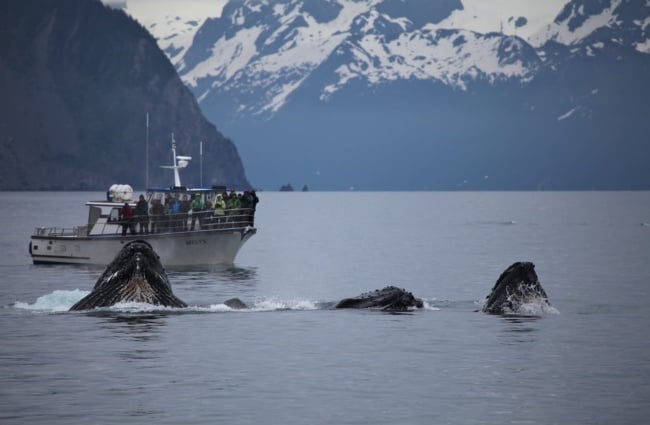
Echoes of the Deep Past: Humpback Evolution
The evolutionary journey of the Humpback Whale, like all cetaceans, is a remarkable tale of adaptation from land to sea. Millions of years ago, their ancestors were four-legged, hoofed mammals that gradually returned to the ocean, undergoing profound physiological changes to thrive in an aquatic environment.
From Land to Sea: A Whale’s Journey
Humpbacks belong to the suborder Mysticeti, or baleen whales, which diverged from toothed whales (Odontoceti) approximately 34 million years ago. Early baleen whales still possessed teeth, but over time, these were replaced by baleen plates, a specialized filter-feeding apparatus. This evolutionary shift allowed them to exploit vast quantities of small prey, leading to the development of their enormous size and unique feeding strategies. The Humpback’s distinctive long pectoral fins are thought to have evolved for increased maneuverability and stability, particularly useful during their complex feeding behaviors and acrobatic displays. Their lineage traces back through ancient whale forms, showcasing a gradual refinement of adaptations for deep-diving, efficient swimming, and specialized feeding, culminating in the majestic creature we see today.
The Ocean’s Filter Feeders: Diet and Ingenious Hunting
As baleen whales, Humpbacks are not hunters of large prey. Instead, they are masters of filter feeding, consuming vast quantities of tiny organisms to sustain their massive bodies.
Bubble-Net Brilliance
Their diet primarily consists of krill, small crustaceans that swarm in dense patches in polar waters, and small schooling fish such as herring, mackerel, capelin, and sand lance. To capture this dispersed prey, Humpbacks employ a truly ingenious and cooperative hunting technique known as “bubble-net feeding.” A group of whales works together, diving beneath a school of fish or krill. They then release a curtain of bubbles in a circular pattern as they ascend, effectively creating a “net” that corrals the prey into a dense column. The whales then swim up through the center of this bubble net, mouths agape, engulfing thousands of organisms in a single gulp. Their pleated throat grooves expand dramatically to accommodate the massive volume of water and prey, which is then filtered through their baleen plates, trapping the food while expelling the water. An adult Humpback can consume up to 1,360 kilograms (3,000 pounds) of food per day during their feeding season, a staggering amount necessary to fuel their epic migrations and reproductive efforts.
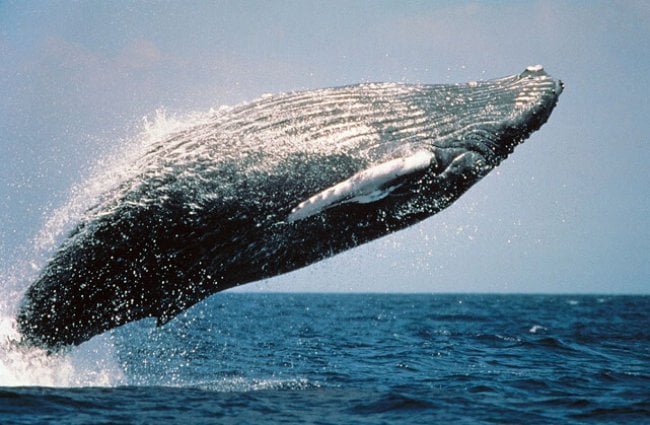
The Dance of Life: Mating and Reproduction
The warm, shallow waters of their breeding grounds are where the Humpback’s most intricate social behaviors unfold, particularly those related to mating and raising their young.
Songs of Courtship and Nursery Waters
Male Humpbacks are renowned for their complex and elaborate songs, which can last for 10 to 20 minutes and be repeated for hours. These songs are believed to play a crucial role in courtship, attracting females and potentially establishing dominance among males. During the breeding season, competitive groups of males often gather around a single female, vying for her attention through displays of power, including chasing, breaching, and tail slapping. While the exact dynamics of Humpback mating are still being studied, it is known that females typically give birth every two to three years.
After a gestation period of approximately 11 to 12 months, a single calf is born in the warm, protected waters of the breeding grounds. Newborn calves are relatively large, typically 4 to 5 meters (13 to 16 feet) long and weighing around 900 kilograms (2,000 pounds). They are nursed by their mothers for about six months to a year, consuming rich, fatty milk that allows them to grow rapidly and develop a insulating layer of blubber. The mother-calf bond is incredibly strong, with the mother diligently protecting and teaching her calf essential survival skills before they embark on their first migration to the feeding grounds. These nursery areas are vital for the survival of the species, offering a safe haven for vulnerable young whales.
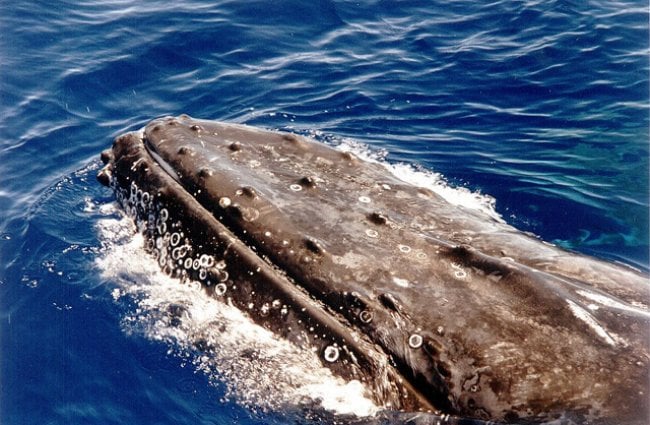
Architects of the Marine Ecosystem: Role and Interactions
Humpback Whales are not just magnificent creatures; they are integral components of the marine ecosystem, playing a significant role in nutrient cycling and interacting with a variety of other species.
The “Whale Pump” and Beyond
As apex predators of their small prey, Humpbacks help regulate populations of krill and small fish. More profoundly, they contribute to what scientists call the “whale pump.” By feeding in deep waters and then surfacing to defecate, they bring essential nutrients from the depths to the sunlit surface waters, where phytoplankton, the base of the marine food web, can utilize them. This process helps fertilize the ocean, boosting productivity and supporting a wide array of marine life. Humpbacks are often observed interacting with other animals, such as seabirds and dolphins, particularly during feeding frenzies, where all species capitalize on the concentrated prey. While adult Humpbacks have few natural predators due to their immense size, young calves can occasionally fall prey to Orcas, or killer whales. Their presence and movements also create dynamic habitats, influencing the distribution and behavior of other marine organisms.
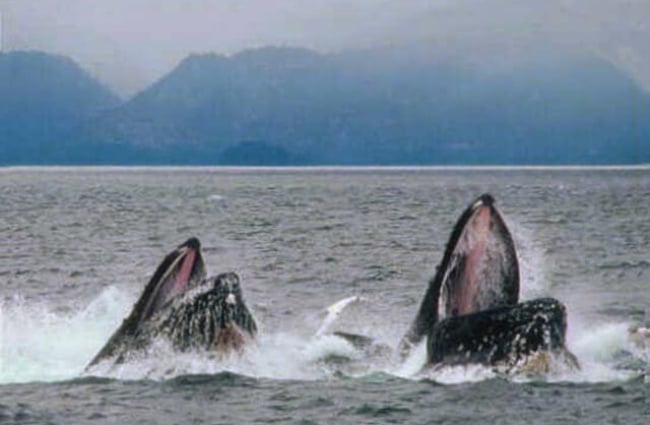
Humpbacks and Humanity: A Complex Relationship
The history of Humpback Whales and humans is a complex tapestry woven with exploitation, reverence, and now, a concerted effort towards conservation.
From Harpoons to Hope: Conservation Efforts
For centuries, Humpbacks were hunted relentlessly for their blubber and oil, pushing populations to the brink of extinction. By the mid-20th century, their numbers had plummeted by over 90%. However, thanks to the international ban on commercial whaling in 1966 and subsequent conservation efforts, many Humpback populations have shown remarkable signs of recovery. They are currently listed as “Least Concern” by the IUCN, a testament to successful conservation, though some distinct populations still face significant threats. Conservation efforts today focus on mitigating ongoing threats such as entanglement in fishing gear, ship strikes, ocean noise pollution, and the impacts of climate change on their food sources and habitats.
Cultural Resonance and Responsible Encounters
Beyond their ecological importance, Humpbacks hold a special place in human culture. Their mesmerizing songs have inspired musicians and scientists alike, and their majestic presence has become a symbol of ocean wilderness. The booming whale-watching industry allows millions of people annually to witness these creatures firsthand, fostering appreciation and support for marine conservation. However, it is crucial that these encounters are conducted responsibly. Whale watching guidelines emphasize maintaining safe distances, approaching whales slowly and cautiously, and never pursuing or harassing them. Respecting their space ensures that these interactions remain positive for both whales and humans.
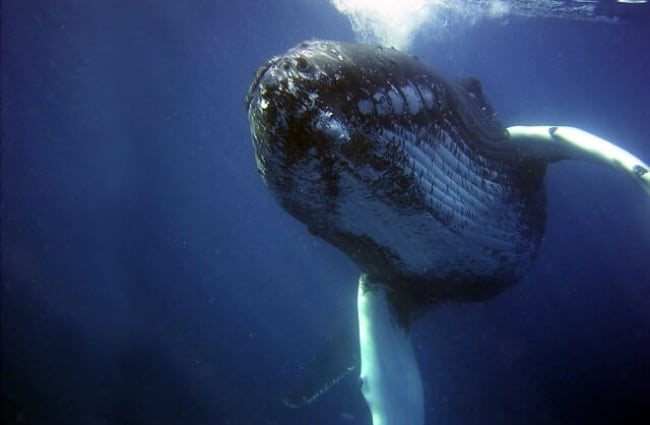
Fascinating Facts: Wonders of the Humpback World
The Humpback Whale is a creature of endless fascination, full of behaviors and characteristics that continue to amaze researchers and enthusiasts.
A Symphony of Behaviors
- Acrobatic Displays: Humpbacks are famous for their spectacular aerial behaviors, including breaching (leaping almost entirely out of the water), spyhopping (lifting their head vertically out of the water to look around), and tail slapping. The exact reasons for these behaviors are still debated, but they are thought to be related to communication, play, removing parasites, or even courtship.
- Unique Fluke Patterns: The underside of a Humpback’s fluke (tail fin) has a unique pattern of white and black pigmentation, scars, and nicks. This pattern is as individual as a human fingerprint and is used by scientists to identify and track individual whales over their lifetime.
- The Longest Migration: Humpbacks undertake some of the longest migrations of any mammal, traveling thousands of miles between their feeding and breeding grounds each year. Some populations travel over 8,000 kilometers (5,000 miles) one way.
- Complex Songs: Only male Humpbacks sing, and their songs are incredibly complex, structured sequences of moans, cries, and whistles. All males in a particular population sing the same song, which gradually evolves over time, like a cultural phenomenon.
- Bubble-Net Feeding: As mentioned, this cooperative hunting strategy is a marvel of animal intelligence and teamwork, unique to Humpback Whales.
- Gentle Giants: Despite their immense size, Humpbacks are generally not aggressive towards humans, often displaying curiosity rather than hostility.

Seeking Giants: Responsible Whale Watching
For those eager to witness Humpback Whales in their natural habitat, responsible planning is key to a memorable and ethical experience.
Your Guide to Encountering Humpbacks
To find Humpback Whales, focus on their seasonal migrations. During summer, look for tours in feeding grounds like Alaska, British Columbia, New England, and Iceland. In winter, head to breeding grounds such as Hawaii, Mexico (Baja California and Pacific coast), the Caribbean (Dominican Republic, Silver Bank), and Australia (east and west coasts). Look for reputable tour operators who adhere to strict whale watching guidelines, which often include:
- Maintaining a minimum distance from whales (often 100 yards or 90 meters).
- Approaching and departing whales slowly and predictably.
- Avoiding sudden changes in speed or direction.
- Limiting the time spent with any single whale or group.
- Never encircling whales or blocking their path.
- Avoiding swimming with, feeding, or touching whales.
Signs of Humpback presence include their distinctive “blow” (the spout of water vapor exhaled from their blowhole), which can reach several meters high. Breaches, tail slaps, and pectoral fin slaps are also clear indicators. Listening for their songs with hydrophones on some tours can also reveal their presence even when they are not visible.
When Paths Cross: What to Do During an Encounter
While rare for a casual hiker to encounter a Humpback Whale directly on land, boaters, kayakers, or coastal observers might find themselves in proximity to these magnificent creatures. Knowing how to react is crucial for both your safety and the whale’s well-being.
Safety First for Both Whale and Human
If you encounter a Humpback Whale while on the water:
- Maintain Distance: The most important rule is to keep a safe and legal distance. Never approach a whale, especially a mother with a calf. If a whale approaches your vessel, put your engine in neutral and allow it to pass.
- Do Not Pursue: Never chase, harass, or attempt to herd a whale.
- Avoid Sudden Movements: Operate your vessel slowly and predictably. Avoid sudden changes in speed or direction.
- Never Feed or Touch: It is illegal and harmful to feed, touch, or swim with wild whales. This can habituate them to humans, leading to dangerous situations for both parties and disrupting their natural behaviors.
- Report Concerns: If you observe an injured, entangled, or stranded whale, do not attempt to intervene yourself. Immediately contact your local marine mammal stranding network or wildlife authorities. They have the expertise and equipment to assist safely.
For coastal observers, simply enjoy the spectacle from a respectful distance. Binoculars can enhance your viewing experience without disturbing the animal.
The Unseen Challenge: Humpbacks in Captivity
The idea of a zookeeper caring for a Humpback Whale in captivity raises a fundamental question: is it even possible or ethical? The answer, for the vast majority of Humpbacks, is a resounding no.
Why the Ocean is Their Only True Home
Humpback Whales are colossal, migratory animals that travel thousands of miles across entire ocean basins. Their complex social structures, intricate feeding strategies like bubble-netting, and deep-diving capabilities are simply incompatible with any man-made enclosure. No aquarium or marine park, regardless of size, could replicate the vastness, depth, and ecological complexity of their natural habitat. Confining a Humpback Whale would be akin to trying to keep a migratory bird in a shoebox; it would be detrimental to their physical and psychological well-being.
Therefore, a zookeeper would not typically care for a healthy Humpback Whale in a permanent captive setting. The tasks associated with such care are impractical and unethical. However, there are extremely rare and specialized circumstances where marine mammal experts might interact with Humpbacks:
- Rehabilitation Centers: In cases of severely injured or entangled whales, specialized marine mammal rescue and rehabilitation centers might temporarily house a Humpback for critical medical treatment. These facilities are designed for short-term care with the ultimate goal of releasing the whale back into the wild. Tasks would involve:
- Administering veterinary care, including medication and wound treatment.
- Monitoring vital signs and behavior around the clock.
- Providing a highly specialized diet, often by hand, to aid recovery.
- Maintaining a sterile and stress-free environment.
- Preparing the whale for release, including physical conditioning.
What would be avoided at all costs is prolonged captivity, unnecessary human interaction that could habituate the whale, and any actions that compromise its ability to survive independently in the wild.
- Research Facilities: Some research facilities might temporarily house very young, orphaned, or non-releasable whales for scientific study, but this is exceedingly rare for Humpbacks due to their size and needs. Even then, the focus is on scientific understanding for conservation, not public display.
Ultimately, the best “care” for a Humpback Whale is ensuring the health of its ocean home. Zoologists and conservationists focus their efforts on protecting Humpback populations in the wild, mitigating threats, and studying their behaviors to ensure their continued survival for generations to come. The ocean is their sanctuary, and it is there that they truly thrive.

![Red Angus Closeup of a beautiful Red Angus cowPhoto by: U.S. Department of Agriculture [pubic domain]https://creativecommons.org/licenses/by/2.0/](https://animals.net/wp-content/uploads/2020/03/Red-Angus-4-238x178.jpg)




![Red Angus Closeup of a beautiful Red Angus cowPhoto by: U.S. Department of Agriculture [pubic domain]https://creativecommons.org/licenses/by/2.0/](https://animals.net/wp-content/uploads/2020/03/Red-Angus-4-100x75.jpg)

